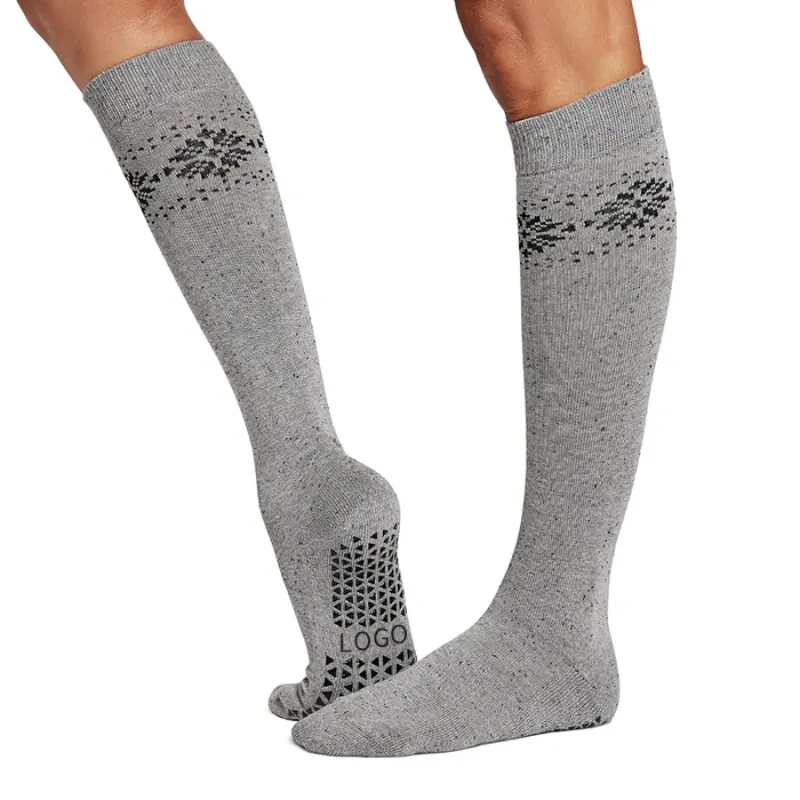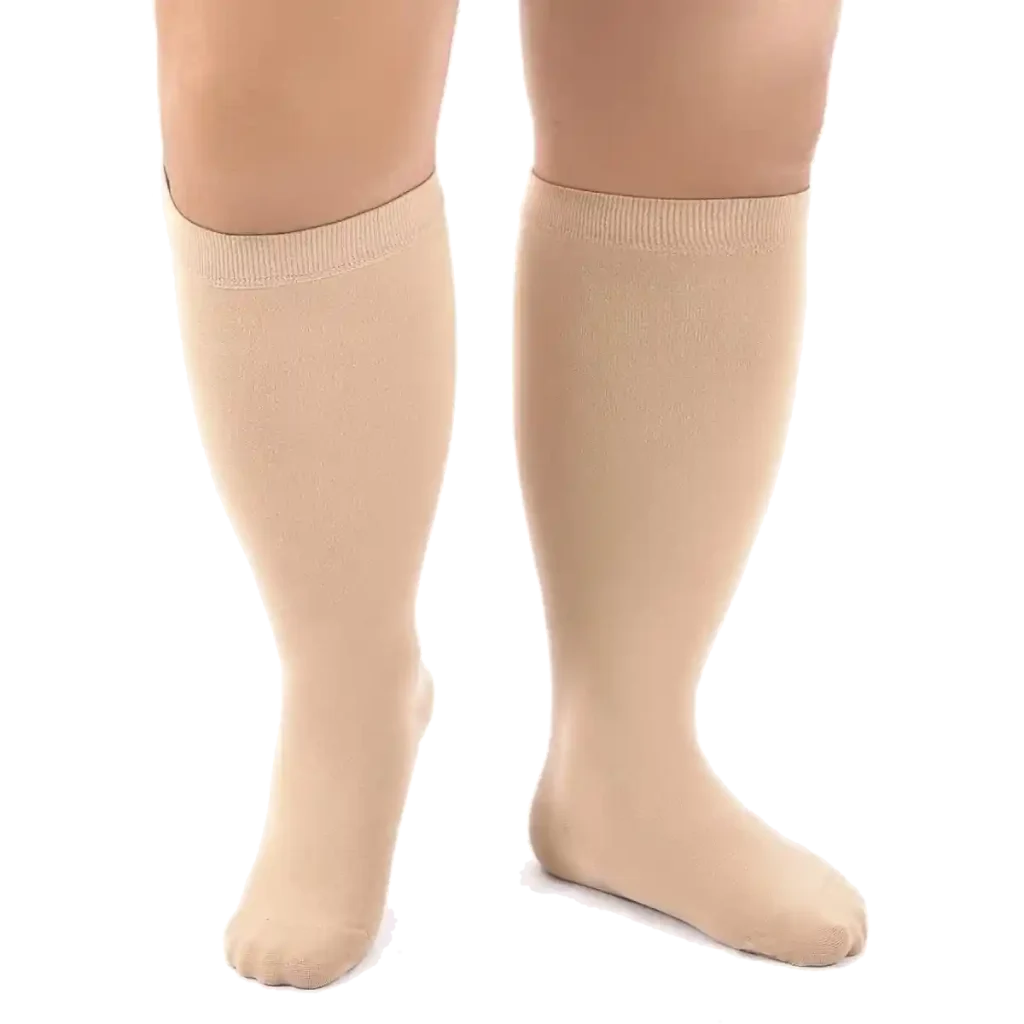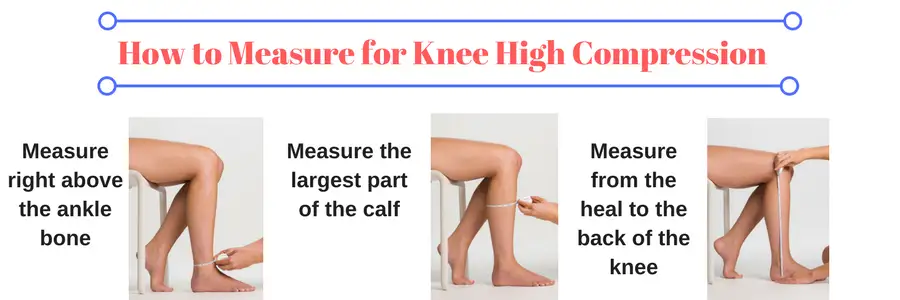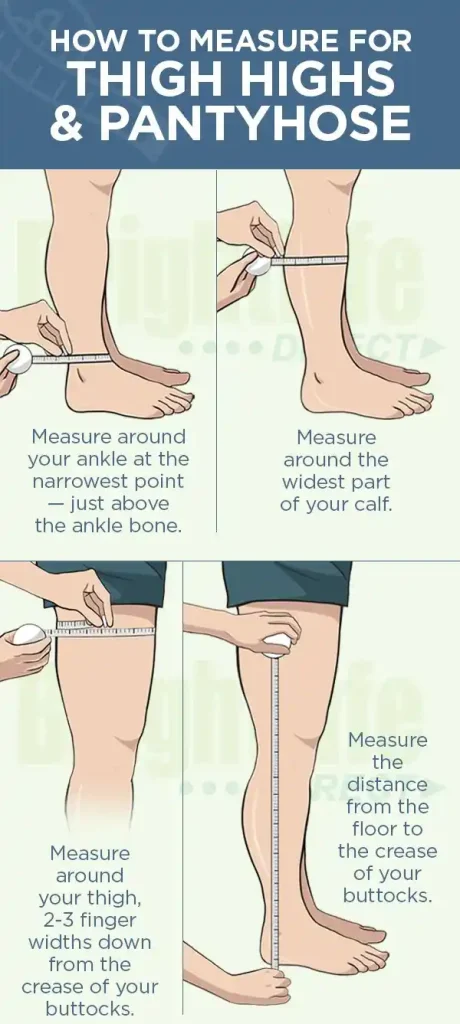Introduction
A proper fit is the foundation of effective compression therapy. When it comes to compression stockings, precision is paramount. Whether your customers are seeking relief for conditions like venous issues, lymphedema, or lipedema, the right fit is essential for delivering the therapeutic benefits they need. An ill-fitting stocking can lead to discomfort, reduced efficacy, and ultimately, dissatisfaction. For your customers, that means a failed experience and a missed opportunity for relief. Ensuring the correct size isn’t just a matter of convenience; it’s about making a meaningful difference in the effectiveness of treatment.
In this step-by-step guide, you’ll learn how to measure with confidence, helping your customers experience the full benefits of compression therapy. Accurate sizing isn’t just a technical step—it’s the key to transforming your customers’ comfort and health.
For an accurate fit, measure your bare legs first thing in the morning before swelling. Use a flexible tape to record the circumference of the narrowest part of your ankle and the widest part of your calf. Finally, compare these precise measurements to the specific brand’s sizing chart.
Understanding Compression Stockings: A Quick Overview
Compression stockings are specially designed garments that apply gentle pressure to the legs, ankles, and feet. This pressure helps to promote blood circulation, reduce swelling, and prevent the discomfort associated with various medical conditions. By providing consistent, controlled compression, these products are often used in the management of venous disorders, lymphedema, and lipedema, offering therapeutic benefits that can greatly improve the quality of life for those affected.
There are several types of compression stockings, each suited to specific needs. Graduated compression stockings are the most common, offering the strongest pressure at the ankle and gradually decreasing up the leg. This helps enhance circulation and reduce fluid retention. Anti-embolism stockings are typically used in hospital settings to prevent blood clots in patients who are immobile. Thigh-high and knee-high stockings vary in length, with thigh-highs offering support for more extensive conditions. Understanding the type that fits each condition and individual need is key to ensuring maximum therapeutic effectiveness for your customers.
Recommendations for Measuring Compression Stockings
When it comes to measuring for compression stockings, the person performing the measurements plays a crucial role in ensuring accuracy. For those new to compression therapy, it’s highly recommended to have a GP, nurse, or pharmacist conduct the measurements. These healthcare professionals have the expertise to evaluate the individual’s needs and take precise measurements, which helps in selecting the appropriate size and compression level. However, self-measuring can also be done, especially with the right guidance.
It’s essential to pay attention to posture and method when measuring for compression stockings. Ensure the individual is standing in a relaxed position with their legs slightly apart. The measurements should be taken with a soft, flexible tape measure close to the skin, but not too tight. Avoid measuring over clothing, as this can distort the results.
For first-time users, seeking professional help is always a good idea. An expert can guide them through the process, ensuring the stockings fit correctly for therapeutic effectiveness. Inaccurate measurements can lead to discomfort and reduced benefits, so when in doubt, having a professional assess the sizing will ensure the best fit for the customer.



Tools You’ll Need: Measuring for Compression Stockings
To achieve precise measurements for compression stockings, it is essential to use the right tools. The primary tool required is a soft tape measure. This flexible tool allows you to measure around the leg without discomfort, ensuring an accurate fit. Rigid or metal measuring devices should be avoided, as they do not offer the necessary flexibility to conform to the leg’s contours.
For the best results, measurements should be taken in centimeters rather than inches. Centimeters provide finer, more precise increments, which are particularly important for the accurate sizing of compression stockings. Additionally, using centimeters aligns with most international sizing standards, making it easier to compare measurements across different regions and avoid potential sizing errors.
While a standard soft tape measure is suitable for most situations, specialized compression measuring gauges may be useful in certain cases, offering additional accuracy. When measuring, always use tools designed specifically for medical purposes to ensure the correct fit and therapeutic effect of the stockings.
The Best Time to Measure for Compression Stockings
The timing of your measurements plays a significant role in ensuring accurate results for compression stockings. The ideal time to measure is in the morning, as this is when your legs are least likely to be swollen. Overnight, your body has had time to rest and reduce any fluid buildup in the legs, leading to a more accurate measurement. This is crucial to ensure the compression stockings fit properly and provide the desired therapeutic benefits.
If measuring in the morning isn’t possible, you can still achieve accurate results by elevating the legs before taking measurements. Raising the legs for about 15 minutes helps reduce swelling and allows the measurement to more closely reflect the size of the legs when they are free from excess fluid. After elevating the legs, take the measurements while standing to maintain a natural posture and ensure a true fit.
Step 1: Measuring for Knee-High Compression Stockings
When measuring for knee-high compression stockings, accuracy is key to ensuring a proper fit and optimal therapeutic effect. Follow these steps to measure correctly:
Calf Circumference
Start by measuring the widest part of the calf, typically around the midpoint between the knee and ankle. Use a soft tape measure to wrap it around the leg, keeping the tape comfortably close to the skin but not tight. Make sure the person is standing with their legs relaxed and slightly apart to avoid any muscle tension that could distort the measurement.

Ankle Circumference
Next, measure the narrowest part of the ankle, which is just above the ankle bone. This area is critical because it determines the snugness of the stocking, which in turn affects its ability to provide compression. Again, ensure the tape measure lies flat against the skin without pulling too tightly, as this can affect the accuracy.
Foot Length
Finally, measure the foot length from the back of the heel to the longest toe. This measurement ensures that the stocking will fit comfortably from the foot all the way up to the knee, preventing discomfort caused by excessive pressure or slackness in the foot area.
Step 2: Measuring for Thigh-High Compression Stockings
When measuring for thigh-high compression stockings, it’s crucial to capture the right dimensions for a secure and comfortable fit. Follow these steps to ensure precise measurements:
Thigh Circumference
Start by measuring the widest part of the thigh, which is typically about 5 cm below the groin. This is the critical area for determining how snug the stocking will fit around the thigh. Use a soft tape measure to wrap around this area, ensuring that the tape is level and lies flat against the skin. Avoid pulling the tape too tight, as this can distort the measurement.
Additional Measurements for Leggings (Hip Circumference)
If you are measuring for leggings or full-length stockings, you’ll also need to measure the hip circumference. This measurement is important for ensuring the stocking stays in place and provides consistent compression throughout the leg. Measure around the widest part of the hip, keeping the tape level and close to the skin.

Maintaining Level and Accurate Measurements
Throughout the measuring process, it’s essential to keep the tape measure level around the leg. The tape should be snug but not tight, resting directly on the skin to avoid any inaccuracies. Make sure the person is standing in a relaxed, natural position to ensure that the measurements reflect their typical posture and leg shape.
Step 3: Custom Measurements for Bulk Orders of Compression Stockings
For brands and retailers looking to offer custom compression stockings in large quantities, your factory provides bulk customization to meet specific needs. While we don’t cater to individual customizations, we specialize in providing tailored solutions for large orders. This includes customization in design, logo placement, and packaging, all while maintaining high production standards and efficiency.
Optimizing Measurements for Bulk Production
While individual measurements are not part of our offering, we work with standardized sizing charts that can accommodate various leg types and conditions. These charts are designed to help you select the right stock sizes that align with the needs of your customer base. By understanding the general sizing requirements for your target market, we can help ensure that your bulk order of compression stockings fits a wide range of customers.
Efficient Production for Large Orders
Once measurements are aligned with your product requirements, we provide streamlined production to meet your demand. Our focus is on ensuring that every order, whether small or large, meets the highest standards for comfort, compression, and therapeutic effectiveness.
Understanding Sizing and Measurement Charts
For professional retailers, understanding how to use measurement charts is crucial in selecting the right size for your customers. These charts help match the measurements taken during the sizing process with the correct stock size for compression stockings. By comparing the individual measurements (such as calf circumference, ankle size, and leg length) with the corresponding values in the chart, you can identify the most suitable product for your customers’ needs.
The Importance of Checking Product Page Details for Size Charts
Before placing bulk orders, it’s essential to always check the size charts provided on the product page. These charts not only indicate the correct size based on key measurements, but they also highlight the specific product types, such as knee-high or thigh-high, and their corresponding measurement points. By reviewing this information, you can ensure that your customers will receive stockings that are both comfortable and effective in providing therapeutic benefits.
Different Product Lengths and Their Corresponding Measurement Points
Compression stockings come in various lengths, and each length has specific measurement points that need to be considered. Knee-high stockings, for example, require measurements of the calf and ankle, while thigh-high stockings will also need the thigh and hip measurements. The exact measurement points may vary slightly depending on the product design, so always refer to the specific size chart for each product. By using the correct chart and measurements, you can provide customers with the best fit possible for their needs.
Measuring Precautions: Getting Accurate Results
To achieve the most accurate measurements for compression stockings, it’s important to follow a few simple precautions that ensure the best fit and comfort for your customers.
How to Ensure Measurements Are Close to the Skin and Avoid Over-Clothing
When taking measurements, always ensure that the tape measure is close to the skin. Avoid measuring over clothing, socks, or other layers, as this can distort the results and lead to inaccurate sizing. The tape should rest gently against the skin without being pulled tightly, allowing for a comfortable fit that accurately reflects the true leg size.
Posture Tips for Accurate Readings
For consistent and precise measurements, it’s important to maintain the right posture. The person being measured should sit with their legs at a 90-degree angle, with their feet flat on the ground. This posture ensures that the muscles are relaxed and not tensed, which could otherwise affect the measurements. Keeping the leg in a natural, neutral position helps guarantee that the stocking will fit comfortably when worn.
The Benefits of Having Someone Assist with Measurements
Having a second person assist with the measuring process can improve accuracy and consistency. Measuring for compression stockings can be tricky, especially when trying to ensure the tape stays level and snug. A second person can help keep the tape measure in place and make sure the measurements are taken correctly, reducing the potential for error and ensuring that the stocking fits as intended.
By following these precautions, you can achieve the most accurate measurements, which are essential for providing customers with compression stockings that fit properly and offer the therapeutic benefits they need.
Conclusion: Get the Perfect Fit for Your Customers
Accurate measurements are key to providing compression stockings that work well and keep your customers comfortable. By following these simple steps, you can ensure your customers get the best fit, whether they need support for medical conditions or just extra comfort during long days.
If you’re ready to offer high-quality, customized compression stockings to your customers, we’re here to help. Our factory specializes in large orders and can provide the perfect solution for your business needs.
Reach out today to start working with us and offer your customers the best in compression therapy!
FAQs
1. What do the compression levels like 15-20 mmHg mean?
The “mmHg” indicates the pressure level. A higher number, like 20-30 mmHg, means a tighter sock with stronger compression. This pressure is firmest at the ankle and gradually decreases up the leg. Choosing the right level is key to getting the benefits you need for circulation and support.
2. How do I choose the right compression level for my needs?
For general wellness, all-day energy, or travel, a moderate 15-20 mmHg is a great start. Firmer compression, like 20-30 mmHg, is typically for managing specific medical conditions, athletic recovery, or significant swelling. For these higher levels, it’s best to consult a healthcare professional for guidance.
3. How do I find my correct size in compression socks?
Proper sizing is crucial. Don’t rely on shoe size alone. For the most accurate fit, measure the circumference of your ankle and calf in the morning before swelling occurs. Then, compare your measurements to the specific size chart provided for the sock model you are interested in purchasing.
4. When do I need a prescription for compression socks?
While you can buy moderate compression (around 15-20 mmHg) over-the-counter, higher levels often require a doctor’s guidance. Compression of 20-30 mmHg and above is considered medical-grade and is typically prescribed to treat specific health conditions, ensuring you get the correct and safest level of pressure.
5. Why is getting the correct size and compression level so important?
An incorrect fit can be ineffective or even counterproductive. If a sock is too loose, it won’t provide any circulatory benefits. If it’s too tight, it can uncomfortably restrict blood flow. The right combination ensures effective, safe, and comfortable support to improve your leg health and overall well-being.
